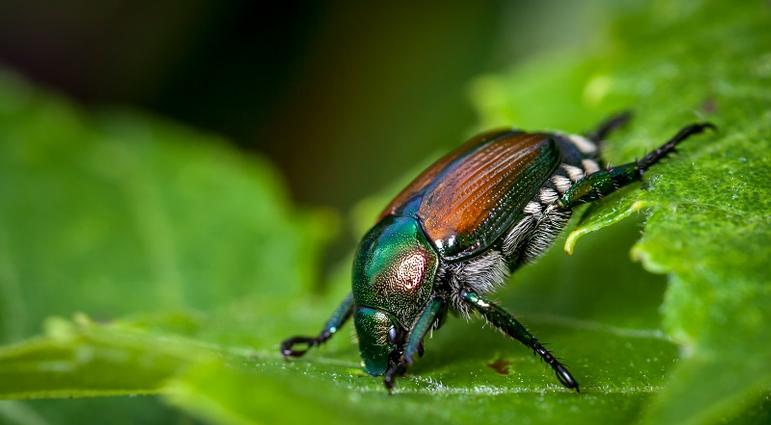Japanese Beetles Can Cause Serious Damage!

Many of you live in the parts of the US where there are Japanese beetles. These are about ¼” round, dark brown, hard shelled, vigorous fliers. They usually have an iridescent look to them. Some years they may be worse than others, but often this depends on where you live. One side of town can be more infested than the other in a particular year. Japanese beetles are voracious feeders on the leaves of young trees— especially sweet cherry and other stone fruit, although they will eat lots of other types of plants.
JB DAMAGE
Look for skeletonizing of the leaves and obvious chewing damage. Often you will see the beetles chewing and eating on the leaves, and if you shake a branch the beetles will usually start flying.
JB REALLY LOVE CHERRIES!
If you have sweet cherries and other stone fruits, you need to worry about Japanese beetle, as they can denude a tree fairly rapidly and weaken it for the fall and winter. Japanese beetles are not easy to control since they are such good fliers. Many insecticides will work on them, but they usually have to be applied frequently. Some people recommend pheromone traps, which can be found in garden centers and hardware stores. The theory is to attract the beetles to the traps where they fall in and can’t get out. They are effective at attracting beetles and catching them, but one wonders whether they just attract more beetles than normal to the area. Just where do you put the traps for best effect? A good guess.
JB GRUBS LIVE IN LAWNS AND UNDER GRASSES
Japanese beetles grow as white grubs in the lawn and under grass. The grubs are a favorite food for moles, so controlling the grubs helps reduce the mole population too! They require grass to lay their eggs into, so most lawns in JB infested areas are infested with the white JB grub, which will then hatch out periodically in the summer into beetles. Typically there will be a flush of beetles for a week or so and then they tend to dissipate, so the damage can come very fast and heavy, and then when there are fewer beetles, less new damage will happen. If you can control the beetles when they are most prevalent, trees can recover some of their lost growth. Always keep an eye out for them and try to control them as best you can.